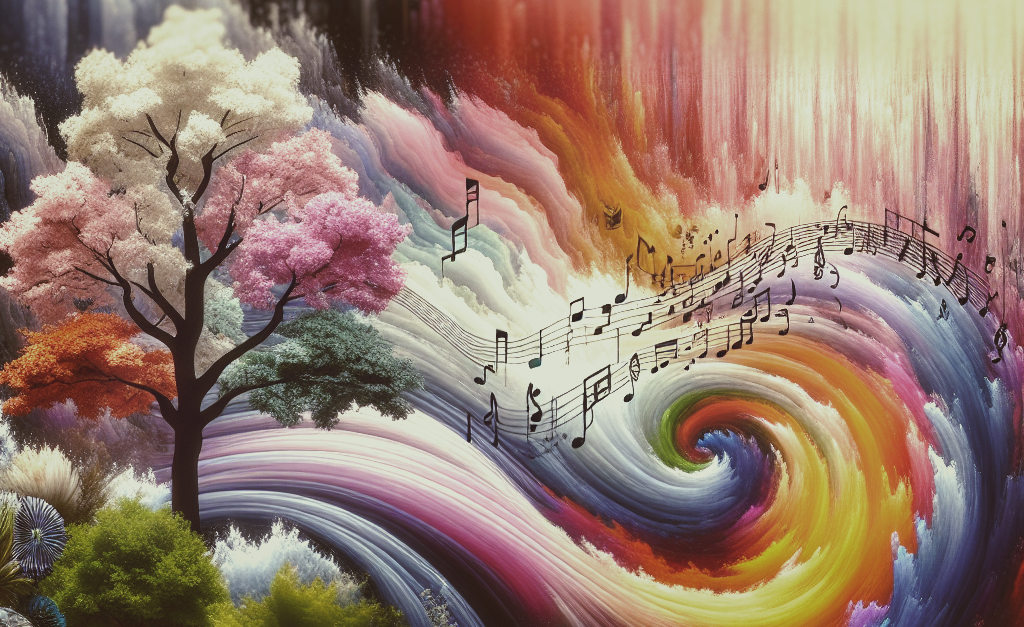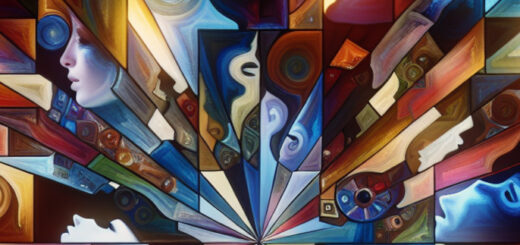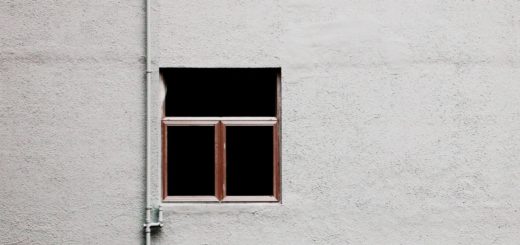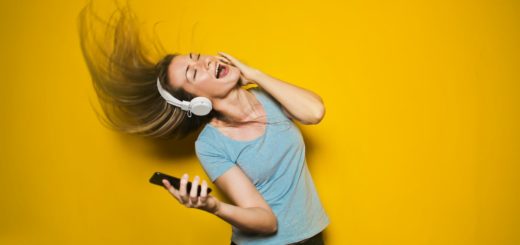Art is an Expression of the Soul

For me growing up art was the thing that got me through some days. It was an outlet for me to grow and threive when things weren’t working out. That says a lot about something that at first glace seems simple enough line on paper, brush on canvas. Art, in all its forms, serves as a powerful medium for expressing the deepest emotions, thoughts, and ideas that reside within us. It is like a language that transcends barriers and allows us to communicate with the world in a way that words often fail to do. Just as each person has their own unique voice, artists too have their distinct ways of expressing themselves.
To understand the essence of art, we can draw an analogy from nature itself.
Just as every flower blooms differently and every tree bears its own distinct branches, art too takes on various forms. From vibrant paintings that depict vivid landscapes to soul-stirring melodies that echo through our hearts, art showcases the vastness and richness of human creativity.
If you’re looking to delve deeper into the significance of art and its transformative power, I invite you to explore works by renowned figures such as Vincent van Gogh or Frida Kahlo. Their masterpieces not only provide glimpses into their personal struggles but also shed light on broader social issues prevalent during their times. By immersing ourselves in these artistic narratives, we gain a broader perspective and a deeper appreciation for the human experience.
Be Warned – It Holds Power
While it’s undoubtedly true that art serves as a powerful medium for self-expression, it’s vital to approach it with caution and sensitivity. Much like a skilled tightrope walker, an artist must carefully navigate the fine line between personal expression and the potential impact on others. Just as a tightrope walker must consider the safety of those below, artists must be mindful of how their work may resonate with diverse audiences.
In this delicate balancing act, empathy becomes an essential tool. Empathy allows artists to step into the shoes of others and consider how their creations might be interpreted by individuals with different perspectives, experiences, and backgrounds. By embracing empathy, artists can foster inclusivity and create a space for dialogue that bridges gaps in understanding among diverse individuals.
Drawing from personal experience, I recall attending an art exhibition where one particular piece left me feeling unsettled. The artist had depicted a harrowing scene of war and violence, which undoubtedly evoked strong emotions. While recognizing the profound impact such artwork can have on raising awareness about important issues, I couldn’t help but question its potential to further traumatize survivors or perpetuate harmful stereotypes.
In this instance, I believe that the artist could have approached their subject matter with greater consideration for the potential consequences. By striking a balance between their own need for self-expression and the responsibility they held towards their audience, they could have fostered a more inclusive dialogue while still addressing pressing societal concerns.
It is worth noting that this cautionary advice should not stifle artistic expression but rather encourage artists to engage in thoughtful reflection when creating pieces that may evoke strong reactions. With this mindset, artists can harness the power of their creativity to inspire positive change while fostering empathy and understanding among diverse audiences.
To explore this topic further I recommend reading “Art & Fear: Observations On The Perils (and Rewards) of Artmaking” by David Bayles and Ted Orland. I have suggested it before, but only because it had such an inpact on my teen years. This insightful book delves into the challenges artists face and offers practical advice on navigating the intricate landscape of self-expression while being mindful of the impact their work may have on others.
In exploring different approaches within art forms like music, one can witness contrasting styles that reflect individual preferences or emotional connections. For instance, classical compositions from greats like Beethoven or Mozart possess an intricate beauty rooted in precise technicality. On the other hand, jazz improvisations by legends such as Louis Armstrong or Miles Davis exude a sense of freedom and spontaneity. Both styles are equally valid, showcasing the vast spectrum of artistic expression.
As an artist myself, I have often found solace in creating art that resonates with my own experiences and emotions. Whether it’s writing poetry or painting abstract landscapes, these acts of creation provide a cathartic release, allowing me to connect with my innermost thoughts and feelings.
However, it is worth noting that taste in art is subjective and ever-evolving.
What may resonate with one person may not necessarily appeal to another. It is through this diversity of perspectives that we can challenge our preconceived notions and expand our horizons. By actively seeking out art forms and artists that are outside our comfort zones, we open ourselves up to new possibilities and deepen our understanding of the human condition.
For me, art is a conduit for self-expression that allows us to explore the depths of our souls while connecting with others on an emotional level. By embracing diverse perspectives and exploring various artistic genres, we enrich our own experiences and foster a more inclusive society. Let us celebrate the uniqueness of each artist’s voice and continue to create, appreciate, and share the beauty that lies within us all.



